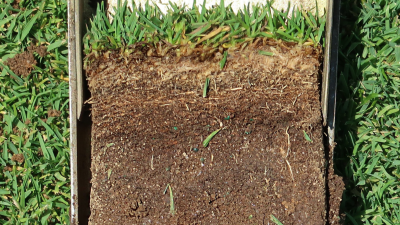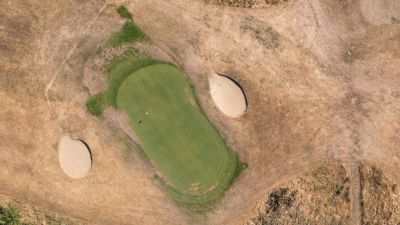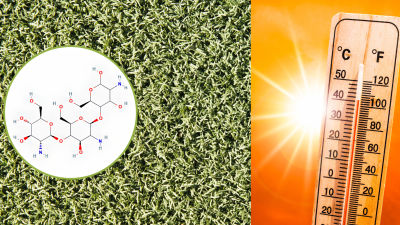14.08.2024
Strategies for controlling moss on golf greens without using herbicides
Reasons for the appearance of unwanted mosses and strategies to control them ecologically
The formation of unwanted moss is relatively common on golf course greens and is a problem that affects the quality of play, the aesthetics of the green and that greenkeepers have difficulty resolving. The use of herbicides is increasingly limited and can also have undesirable effects on creeping bentgrass (Agrostis Stolonifera), so alternative solutions to the use of these products are being sought.
Moss usually develops in shady areas, with low grass density, compacted, poorly drained or nutrient-deficient soil and acidic soil. To prevent its formation, we must systemically improve light penetration, aeration, drainage and possibly adjust the pH of the soil (if it is too low) to prevent the moss from returning.
From the experience of some greenkeepers we know, the continued use of iron in liquid form complexed with nitrogen, for example a formulation of Iron (Fe) 5% and Nitrogen (N) 5% w/w, at a high rate, can help interrupt the photosynthesis of the moss, causing it to blacken and die, while the grass remains unharmed. It should be noted that repeated applications can lead to acidification of the soil over time, which may not be desirable, depending on the pH levels in your soil, so this application should be well controlled by monitoring the pH of the soil.
If one of the reasons for the appearance of mosses is a more acidic soil pH, using a sand in the topdressing or a covering fertiliser with a slightly higher pH will gradually increase the pH.
Another viable but more short-term alternative is sodium bicarbonate, a non-toxic option for drying out moss. It works by altering the pH of the surface, creating an environment where moss has difficulty developing. It is easy to apply, readily available and easy to apply, either as a dry powder or dissolved in water. Sodium bicarbonate may not be as effective on established moss or in areas with persistent damp. It may only be suitable for small spots and may need to be reapplied. In addition, baking soda can potentially increase the sodium content in the soil, which can lead to soil structure problems or have a negative impact on lawns if overused.
Verticutting is effective for physically removing moss from the surface of the lawn. This process also reduces thatch, improves air exchange and helps water infiltration. Verticutting can promote healthier lawn growth by reducing competition from moss and allowing the lawn to establish itself more robustly. After verticutting, the application of chelated iron or another treatment can be more effective because the moss has been weakened or removed. If we use baking soda, the dried moss can be removed through verticutting.
**In conclusion: These are some strategies for controlling the appearance of moss on greens. Soilneo has available, for example, TDR to measure soil moisture, pH meters of various types to measure soil pH, high quality chelated iron and products such as OxyTurf, for aerating the soil and reducing the thatch layer and which can be important in solving this problem.
Discussion: If you have other strategies for solving this problem, tell us about your experience. We are interested in recommending and applying the best greenkeeping strategies.
Photo: GCMOnline.com






